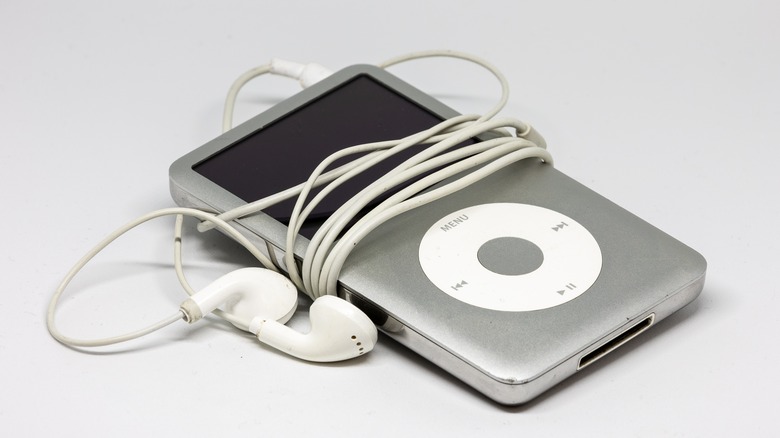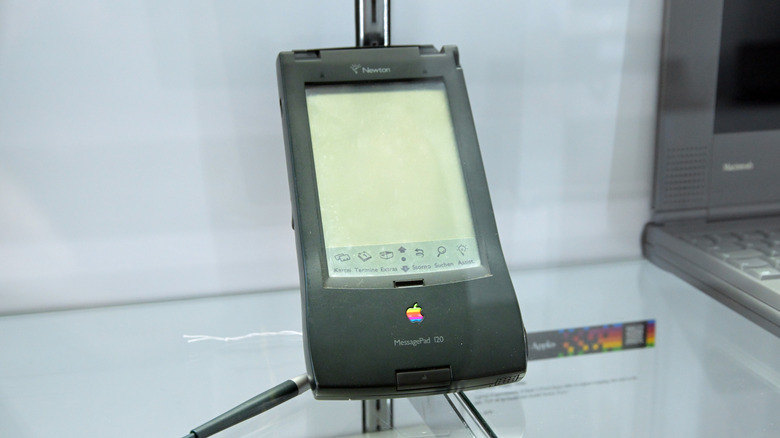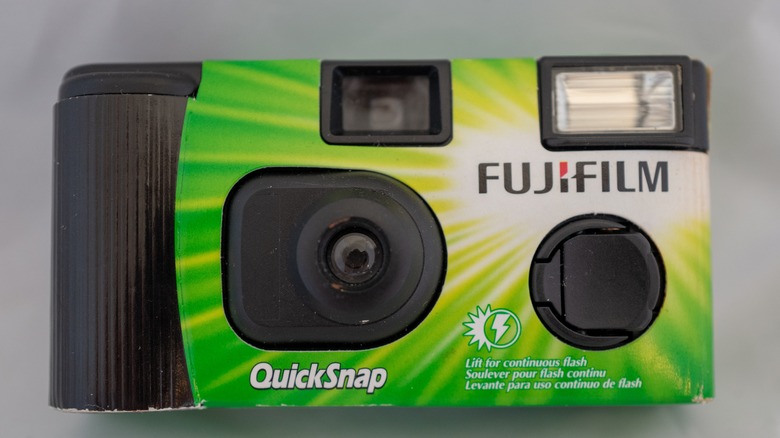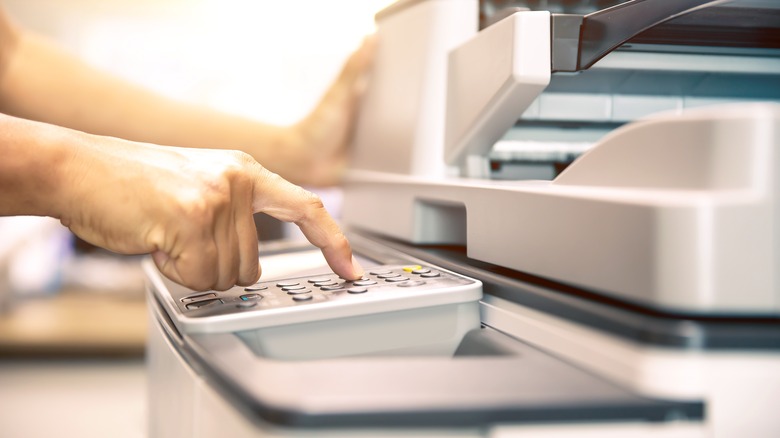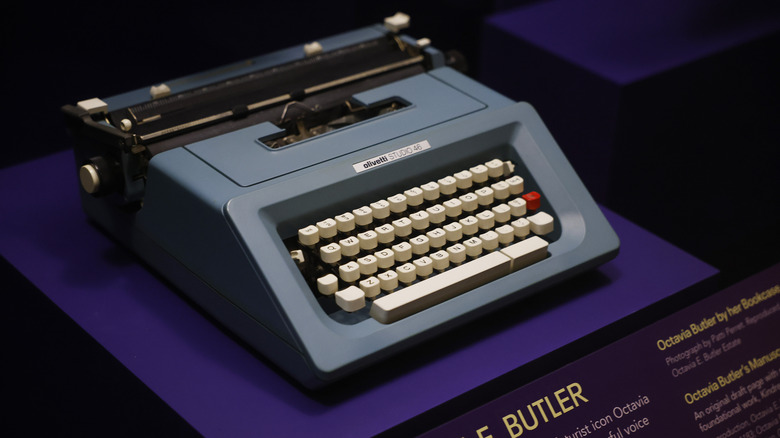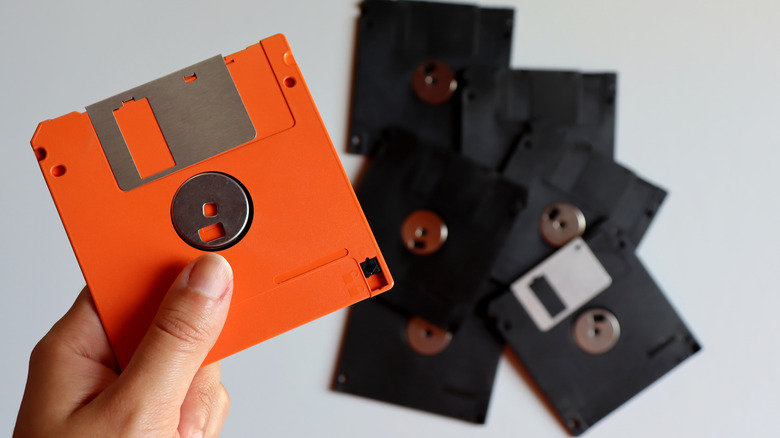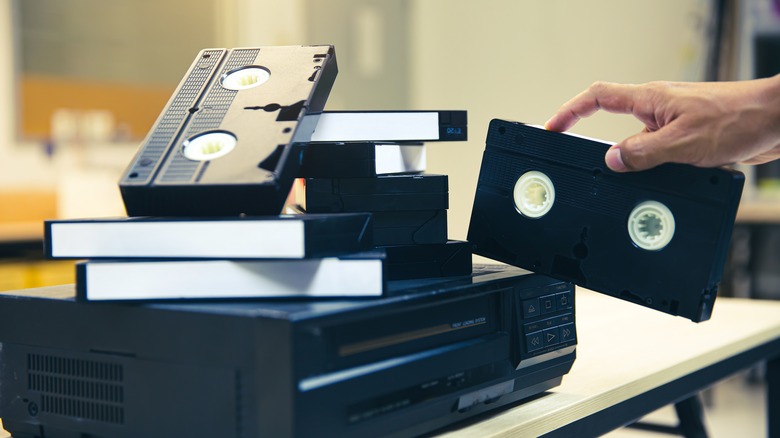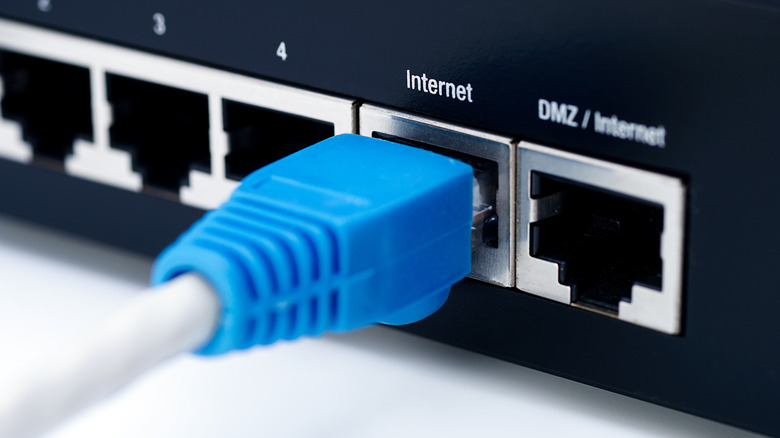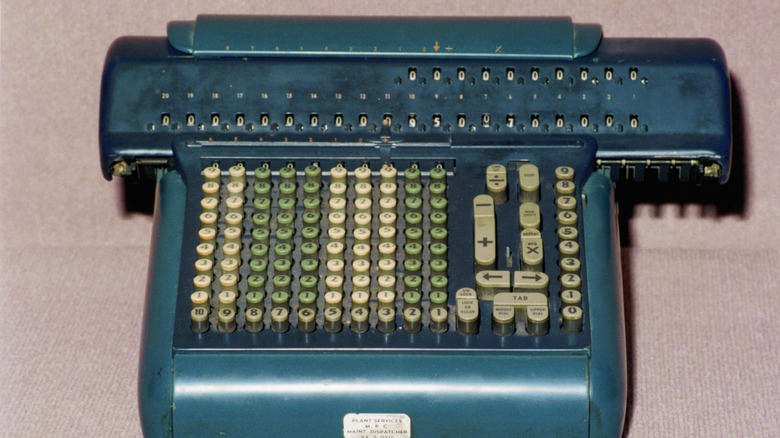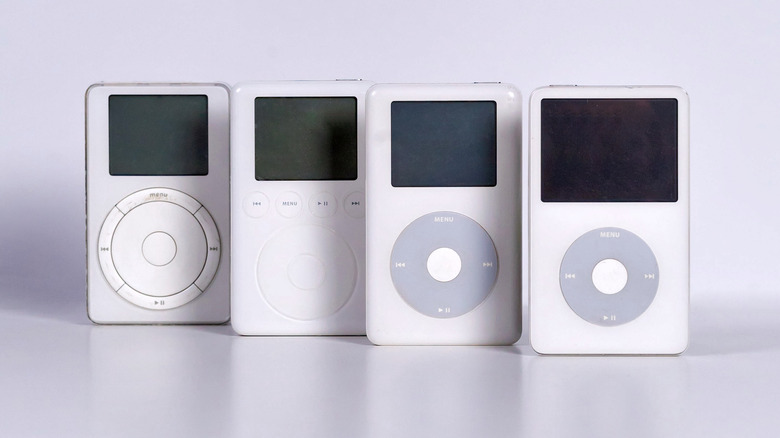10 Revolutionary Tech Inventions That Are Obsolete In 2023
If there is one certainty in the world, technology never stands still. No matter how important a new device or advancement is, it will always be usurped by a successor in the future. That's just how technology works and it means that what was once the latest top-of-the-line tech can quickly become completely obsolete, replaced by something faster, smaller, and more efficient than people had previously thought possible.
In many cases, these now outdated and antiquated pieces of technology were revolutionary inventions that even the greatest minds of the time probably assumed would be relevant for much longer than they actually were. They helped to change the world and proved influential in human history but they are now little more than memories in the drawer.
These revolutionary inventions were hugely important in their heyday, but have since fallen out of use as new tech took over our lives and rendered predecessors obsolete.
PDAs
At one point, the personal digital assistant (otherwise known as the PDA) was the sign of a successful businessperson. Having first emerged in the 1980s, PDAs were never a widespread device and most people didn't see the need to have a small personal computer with them wherever they went. Yet, they found a niche market in the world of business where the ability to be able to manage contacts, make notes, and arrange appointments while on the move was an essential part of the everyday job.
By the mid-'90s, PDAs could carry out other tasks and have more complex features. PDAs such as the PalmPilot and the Pocket PC were able to integrate with desktop computers and share data, could play media files, and connect wirelessly to other devices or services. Touch screens also vastly improved, allowing users to handwrite notes that would be automatically converted into text, while most PDAs could be used for messaging and web browsing.
As smartphones started to take off in the mid-2000s, PDAs became less necessary. Smartphones with touch screens had all the same capabilities as a traditional PDA along with additional functions such as the ability to make calls, send SMS messages, and run entertainment apps or services. Very few people wanted to carry around more than one device.
Disposable cameras
Photography is something that many people take for granted nowadays. With every smartphone coming equipped with impressive in-built cameras capable of taking great pictures, people are taking more photographs than ever before. In fact, millions of photos are uploaded to social media sites like Instagram every single day, proving how integral the act has become as part of our daily lives. Yet, being able to snap images of the world around us was not always quite as simple, especially for those who didn't have access to expensive camera equipment.
That's where disposable cameras were so useful, as they allowed people to capture photographs without the need for training or expensive cameras. For a small price, these pre-loaded devices could take a set number of photographs before being taken to a processing lab where the photographs could be printed out from the film inside. Lightweight, affordable, and easy-to-use, disposable cameras were ideal for those traveling or at events such as weddings.
The first disposable cameras were introduced in the late 1940s but they didn't truly reach their peak until the 1990s, with the likes of Kodak and Fuji dominating the market while bringing photography to more mainstream audiences. However, the rise in digital cameras, especially in smartphones, meant that disposable cameras were no longer necessary as most people had access to higher quality and more instant forms of photography.
Fax machines
The fax machine is capable of sending images or documents to recipients around the world using telephone lines. The technology had its roots in devices built in the late 1800s and early 1900s but the first proper fax machine didn't arrive until 1964. That's when the Xerox company made the Long Distance Xerography machine available for the first time. Over the next few decades, fax machines became faster, more efficient, and produced higher quality images thanks to new printing technologies.
Fax machines quickly became an important part of everyday society. They allowed people, businesses, and organizations to send important documents quickly without having to rely on standard mail services. The traditional fax process usually involves the sending machine scanning a document and then transferring the visual information into data that can be sent down a phone line or over the internet. The receiving machine then decodes this data and transfers it back into an image that can then be printed out.
Standalone fax machines began to be phased out with the release of all-in-one printers that can perform a variety of functions such as scanning, printing, and faxing. The widespread use of email and other messaging services has largely rendered faxing obsolete — although some specific businesses and organizations still rely on fax machines for certain documents.
Typewriters
The origin of the typewriter can be traced back to inventors producing working typing machines in the 19th Century. From there, typewriters evolved several times, incorporating new ideas to make them faster and more accurate than ever before. Electric typewriters and the IBM Selectric typewriter were major advancements, although the technology didn't radically change throughout much of its history.
Typewriters were undoubtedly revolutionary when they entered the mainstream. Compared to standard handwritten documents, typewriters can produce work in a shorter amount of time and in a standardized format that is far easier to read. This created far more efficient workspaces and dramatically improved other industries, such as journalism and publishing by giving writers the opportunity to get news or stories out in a more timely fashion. They were also a major factor in helping women find paid work in clerical roles and played a major role in the industrial revolution.
The late 20th Century saw a gradual move from typewriters to word processors on computers. These programs allow users to quickly fix mistakes, are less prone to errors and malfunctions, and can save work digitally so it can easily be reproduced countless times. As the use of personal computers, printers, and smartphones has increased, the need for typewriters has diminished.
Floppy disks
Invented by an IBM engineer, the floppy disk is a storage medium first introduced in the 1960s. The medium utilizes a magnetic disc that is encased in a plastic rectangle, with a metal spring-loaded clip protecting the exposed strip that is used to read and write information when it is inserted into a computer's drive. Using a floppy disk, users could transfer data between different machines and create backups of their work.
Floppy disks were widespread through the early days of computing and were used up until the late 1990s as the primary form of data storage. Before they entered the market, data transfer was much more difficult as storing data could only be done on larger and heavier drives. The floppy disk essentially made data storage truly portable and accessible, as they were cheap, lightweight, and easy to use. They eventually led to large-scale software distribution, providing ways for computer users to gain access to everything from education programs to computer games.
However, as computer technology moved forward, the limitations of the floppy disk started to outweigh the benefits. Software was dramatically increasing in size, making the typical 1.44 megabytes of capacity on a floppy disk problematic. Meanwhile, faster and higher capacity storage solutions, such as CD-ROMs and USB flash drives, were becoming more widespread. These factors combined to bring an end to the era of the floppy disk.
VHS
Before home media, people were limited when it came to watching movies and television series. Unless a film was in the cinema or being shown on television, there was no way to watch it. That was also the case for shows as well as people were restricted to whatever the television schedule was. That changed in the 1970s with the release of VHS tapes and, following a fierce war with Betamax, the format established itself as the only real option when it came to home media.
VHS was revolutionary in the way it allowed people to consume video content. For the first time, everyday people could buy and own copies of movies or shows and could watch them whenever they wanted. VCRs even made it possible to record content directly from televisions. This made entertainment far more accessible than ever before while also giving customers more freedom to choose exactly what they wanted to watch.
The end of VHS as a medium, and consequently VCRs and VHS players, came about as a direct result of the release of DVDs. This new disc-based solution had many advantages, ranging from its higher video quality to the smaller size compared to tapes. DVDs also offered more interactivity, giving users more choices when it came to watching their favorite movies and TV shows. Of course, the advent of digital media and streaming services such as Netflix and Disney+ in more recent years has led to a rapid decline of home media in general.
Dial-up internet
Long before wireless technology such as 5G and broadband, accessing the internet meant using dial-up connection. With that unmistakable sound, it was one the first mainstream way to connect to the world wide web and gave the majority of the public the opportunity to surf the internet. Utilizing the same lines used for landline telephones, dial-up internet became available in the 1980s and saw a surge in popularity throughout the 1990s as more people began to take advantage of what the internet had to offer.
Using a modem, dial-up internet essentially worked by transferring digital data into analog information that could be sent over telephone lines. This had the unfortunate consequence of preventing anyone else in the house from using the phone line to make calls as the internet connection took up the entire bandwidth of the line. As a network connection, though, dial-up had a number of limitations with the most notable being the 56 kbps maximum speed.
As the world wide web became more prominent, new technologies were created to make using the web a better experience. DLS, broadband, and fiber optic networks were more reliable and far faster, making dial-up completely unnecessary. For example, one of the largest telecommunication companies in the UK switched off its dial-up service in 2013 citing the fact that just a few thousand people were still using it.
Landline telephones
The invention of the telephone in the late 19th Century changed communication forever. Prior to landline telephones, people were only able to talk to each other over distances by the use of letters and then telegraphs. However, landline telephones gave people the ability to talk to each other in real time, communicating in a way was not possible throughout most of human history.
From Alexander Graham Bell's patent in 1876, the telephone evolved with telecommunications companies and governments installing vast amounts of telephone lines across entire countries. The landline telephone advanced from old-fashioned rotary phones to cordless models that didn't have to be directly plugged into the phone line. Throughout the 20th Century, it became rarer to find a home in countries such as the United States that did not have a landline phone, connecting hundreds of millions of people and businesses.
Unlike many other technologies here, landline telephones have not yet completely disappeared and can still be found in many homes. But they are not widely used and have largely been overtaken by mobile phones and internet communication services such as VoIP apps. It is likely that landline phones will continue to be phased out, slowly replaced by the billions of smartphones currently in use.
Mechanical calculator
Most people alive today will likely not even remember mechanical calculators, but these devices were one of the most important technological advancements in recent human history. Early mechanical calculators were designed in the 1600s but they weren't perfected or widespread until the late 1800s. Created to perform arithmetic calculations without the need to work them out manually, they didn't require electricity and worked by shifting gears and levers. They were essentially a precursor to modern computers and proved incredibly important.
Able to automate complex calculations, these devices made mathematics much easier for everyone to do regardless of their skill level. Mechanical calculators allowed for advancements across a range of fields and industries thanks to the fact they made computations easier and faster. Education improved, research was made more efficient, and they allowed for the construction of even more complex machines, pushing technology to new heights.
As electrical calculators became more widespread, the older mechanical calculators were soon seen as cumbersome. After all, they were far more compact and could be easily carried around. These lightweight devices spelled the end for the larger mechanical versions, although even electrical calculators are now a rarity considering that smartphones and computers can carry out all of the same functions.
iPods
Although the iPod was far from the first portable MP3, the Apple product certainly popularized this type of device and made playing music on the go more popular than ever before. First introduced to the world in 2001, the original iPod Classic brought a sleek design and friendly user interface that made listening to music easier. With the ability to store thousands of songs and sort music into playlists, these devices heralded the age of digital downloads where stores such as iTunes became more influential than record stores.
Apple quickly expanded its iPod offerings, with releases ranging from the iPod Mini, iPod Shuffle, and iPod Nano all the way to the iPod Touch in 2007. These ranged in size and shape but all were successful and proved to be hits with music lovers across the world. By the time the iPod Touch came out, the device had evolved from a dedicated music player to a multimedia device capable of playing games, running apps, and displaying videos.
Despite the huge success of the iPod, with the devices going on to sell an estimated 450 million units, demand dropped in the second half of the 2010s. As more people invested in smartphones that could carry out all of the functions of an iPod in addition to many other features, the music players were no longer needed. That hasn't stopped some people from wishing Apple had not discontinued the iPod in 2022.
